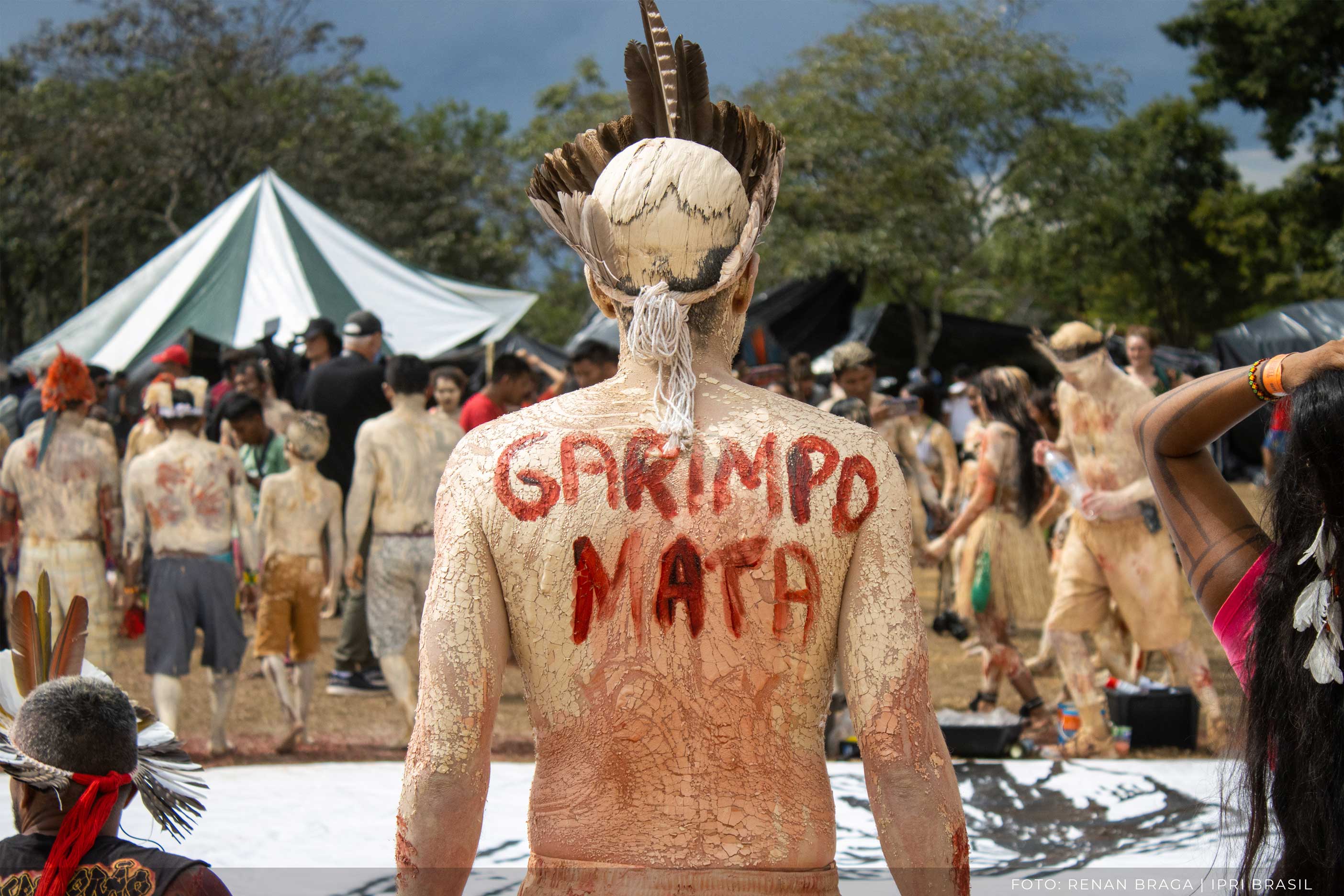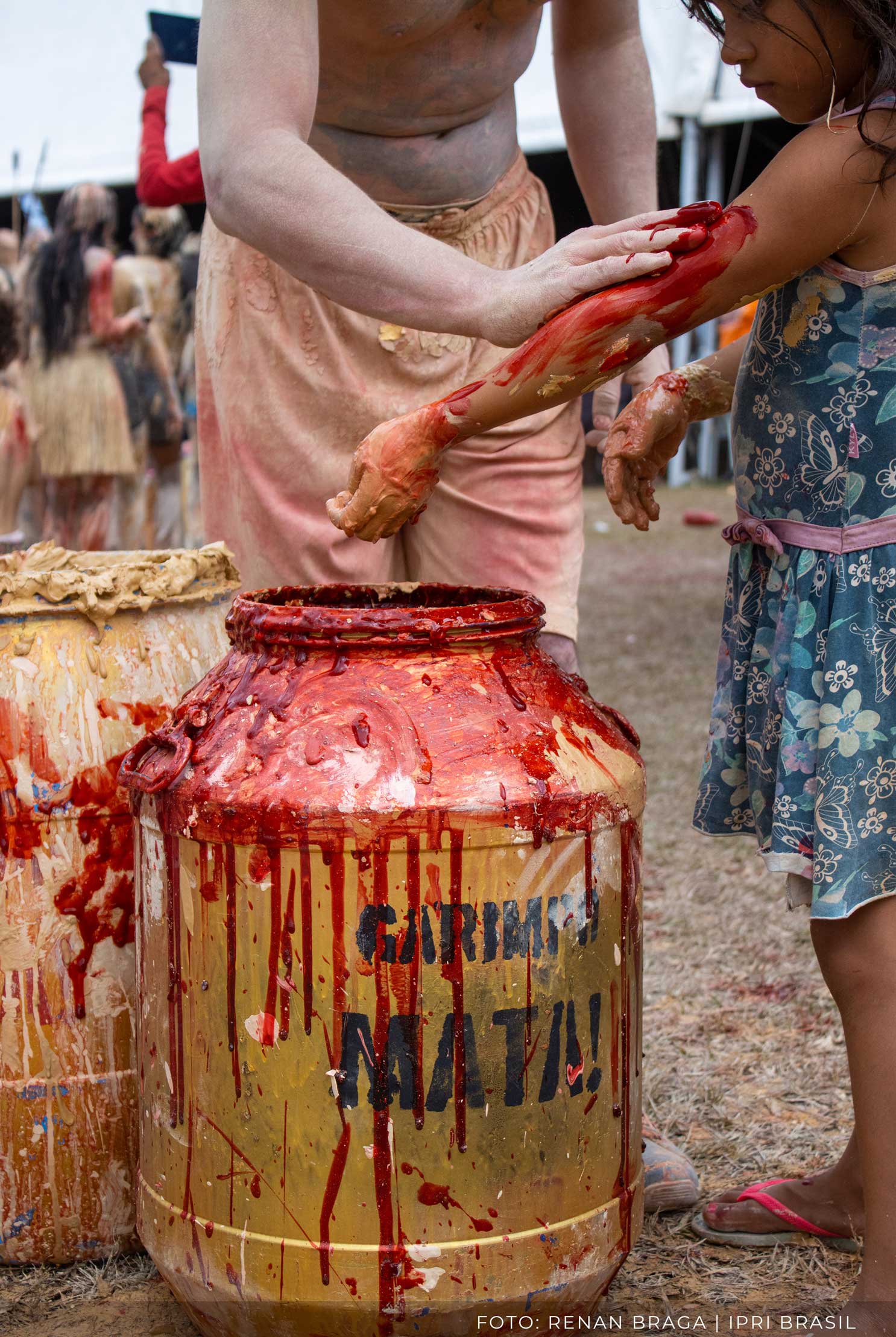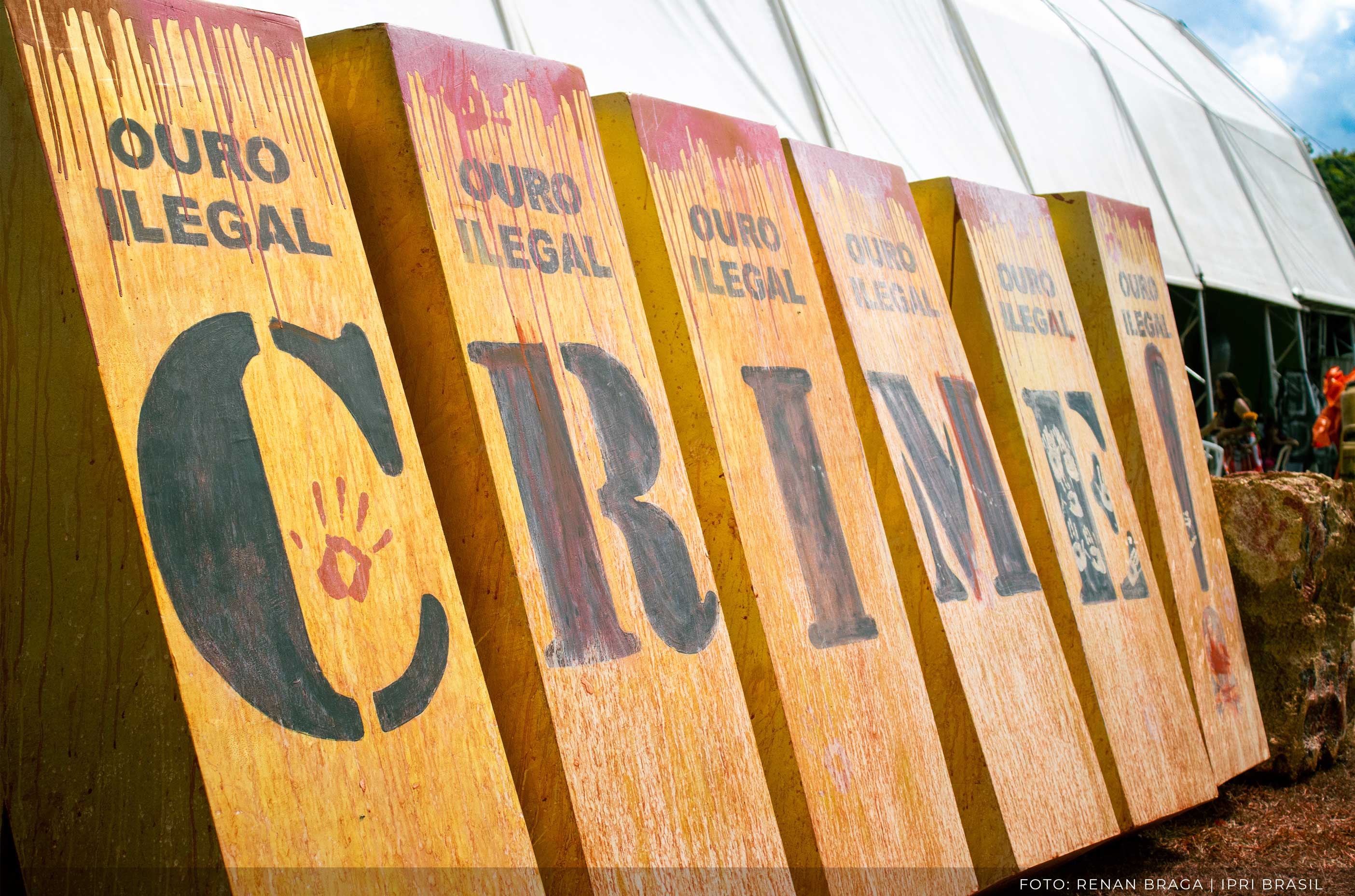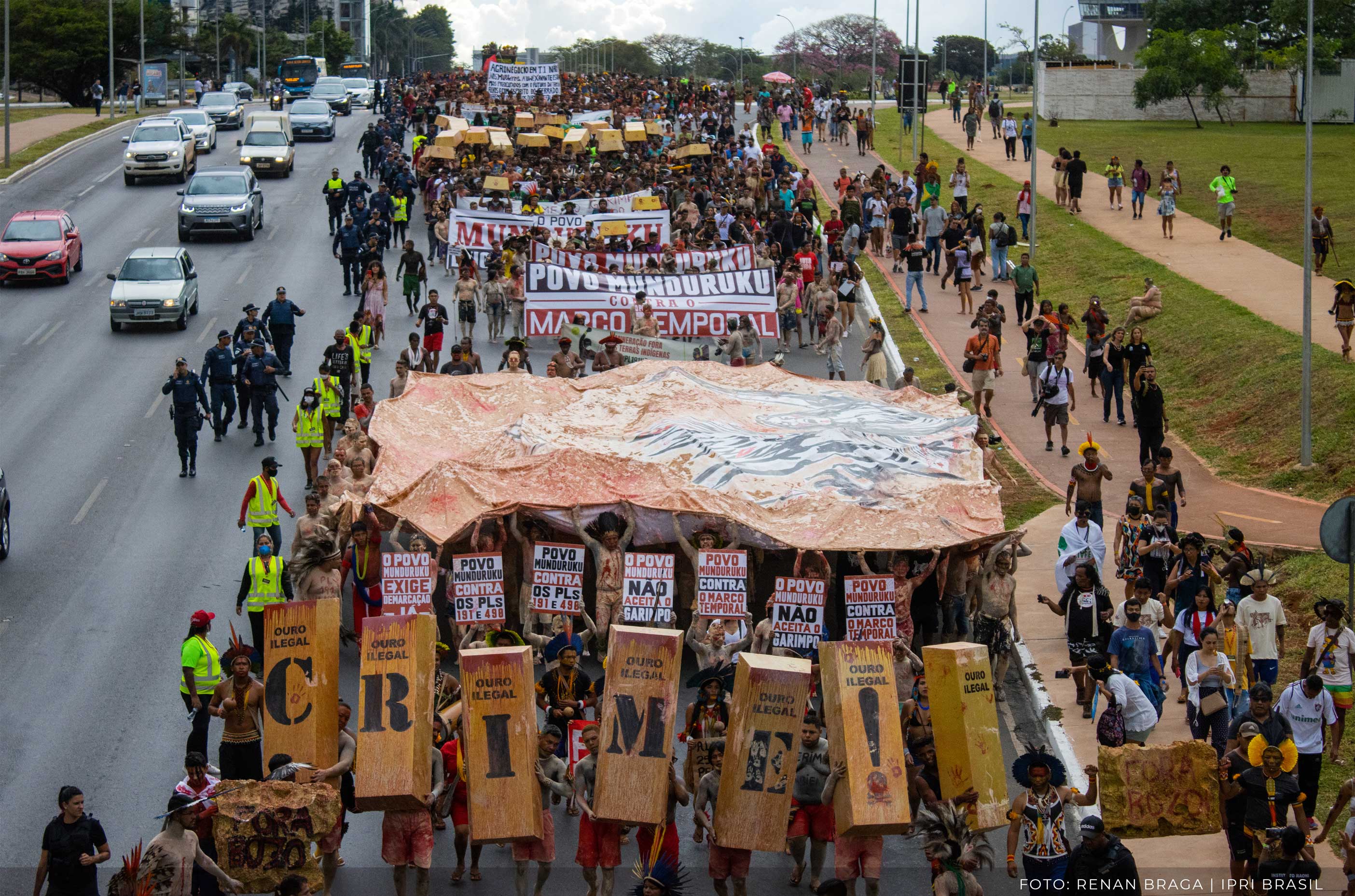Interview with Sonia Guajajara

The Yanomami territory is the largest indigenous territory in Brazil and is located in the states of Roraima and Amazonas. It was officially demarcated by the Brazilian government in 1992. It is home to indigenous peoples who have already been contacted and isolated peoples within the territory, threatened by illegal logging and the rampant increase of garimpo (illegal mining).
In a recent flight over Yanomami territory with Greenpeace and journalists from the Globo television network, the indigenous leader and federal deputy, Sonia Guajajara, confirmed the existence of a 150-kilometer clandestine road built on the lands of this indigenous people and the installation of four heavy machines for mineral extraction. The arrival of heavy machinery increases the vulnerability of the Yanomami, reduces access to their own food (which they collect), and accelerates the destruction of the environment.
In this scenario, approximately 110 communities (out of 300) of the Yanomami Indigenous Land are directly affected by deforestation, destruction, and contamination of water and soil caused by the garimpo. They face criminalization and violence, especially against women, for defending their lands and violations of their rights to land, territory, health as well as a healthy environment.
One way to prepare the ground
In the last four years, during the Bolsonaro administration, there was complicity and articulation to deliberately neglect the fight against garimpo in indigenous territory. The president gave permission for these activities to grow. And during the last election period, when all eyes were on the campaigns, the businessmen who owned the mines took advantage of the opportunity to build this road in just 4 months and facilitate the entry of the machines. All this happened under the inefficiency of the Brazilian State, in complicity between powers, otherwise, it would not have advanced so much. In Bolsonaro's administration alone, the number of illegal miners in Yanomami territory tripled.
This shows that we not only have to prevent the entry of the garimpeiros but also unravel the organized crime that has invaded Yanomami territory and combat the political and business forces that are promoting this structure for the practice of illegal mining. It is no longer enough to carry out police operations to remove the miners and their machinery, a continuous program is needed to combat illegal mining, offering economic alternatives to these miners, maintaining a constant inspection of indigenous lands, among other things.

Garimpo: an environmental and humanitarian crisis that has been going on for more than 20 years.
The garimpo and its impacts have been highlighted by indigenous peoples for more than 40 years. The indigenous organization Hutukara has constantly denounced the presence of miners, the territorial invasion by the garimpo, and the violence against the communities by the garimpeiros. There is a very strong history of violence such as shootings against members of the indigenous population, rape of women, or dredges sucking up children. There have also been cases of minors disappearing in the river, fleeing from the miners. If the Yanomami denounce, the garimpeiros retaliate with increasingly violent actions. The indigenous peoples of the region are dying because of mining.
Over the years, indigenous resistance on Yanomami land has been strengthened and articulated. Non-governmental organizations working on the ground have already issued a number of complaints and legal actions. APIB, for example, filed a legal action asking the Supreme Court to remove the invaders from various territories, including Yanomami, but so far nothing has been done.

Unfortunately, the government has not had the will to expel the invaders and put an end to the illegal exploitation of indigenous territories. During Bolsonaro's government, the decisions of the Brazilian Supreme Federal Court derived from investigations that demonstrated the invasions, deforestation, and illegal mining in the indigenous territory were challenged under the justification that, as the problem is very old, it would not be solved in the four years of government.
The economy cannot be allowed to be based on the exploitation of indigenous territories. It is necessary to promote policies for the protection of the environment, to eliminate the invaders, and protect the life and territory of the Yanomami people. With the articulation of social, environmental, and economic policies it will be possible to stop this practice within the indigenous territories. There is no way to think of economic growth disconnected from the environmental and human rights agenda of indigenous peoples.
Historic Moment for Indigenous Peoples

For the first time in history, indigenous peoples are discussing an indigenous policy, from the root. Not the way it was done before. We are part of the team preparing for the government transition. And it is the result of long years of struggle for visibility, respect for our way of life, and the fulfillment of our rights.
We did not want to occupy positions in political parties and in the government because we understood that the State does not provide us with sufficient conditions to develop our work, in accordance with our demands. But now we understand that we do have to be part of this structure because we have prepared people, committed people, responsible people, and we are advocating for this before the Lula government, so that we have conditions not only to formulate policies in the legislature but also to execute these policies.
It is important to talk about the protagonism of indigenous women in this historical moment. We have two indigenous women articulated with the movement, who were elected as federal deputies, two women who are also being proposed to assume the ministry of indigenous peoples, and a woman being proposed for the Secretariat of Indigenous Peoples.
We, women, have managed to advance in a short period of time with the occupation of spaces in the political tribune. And among ourselves, we are managing to accompany this protagonism of our fellow women. With this occupation of spaces in the short term, we demonstrate that we are also willing to assume spaces beyond our peoples.
Time for reconstruction: an indigenous agenda
We are emerging from a period of dismantling to resume democracy in Brazil. It is a transition with indigenous presence and participation, which always had a secondary or resistance role. To also assume the role of being in the State Parliament with the power of execution. It is time to rebuild and make room for the priorities that will guarantee our lives:
To resume the demarcation of indigenous territories.
- Guarantee the protection of isolated peoples, considering the high rate of invasions and destruction of their territories, which places them in a situation of high vulnerability.
- Ensure a financial structure for health issues - a system that is about to collapse due to budget cuts - and for education issues for indigenous peoples.
- Implement a security strategy for indigenous rights defenders.

We must think more about medium and long-term actions, with the rights of indigenous peoples at the center. Safeguard indigenous peoples and prevent environmental and humanitarian crises - such as the one in Yanomami Indigenous Land - from continuing to grow.
We need to count on the mobilization of civil society, international support, and articulation of national and international networks, to continue pressuring, and fighting until our rights are respected and our demands are met. It is time for us to be together thinking about a project for a country that is adapted to all people and respects all societies. We, the indigenous peoples, are ready to assume the leading role in a new history.

%2020.49.20.png)
